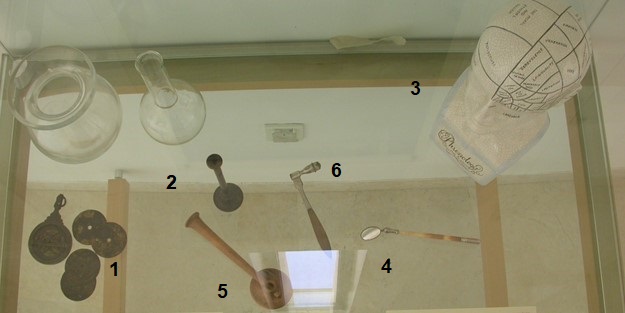The Arcade Gallery - Show Case G
Diagnosis (Uroscopy, Phrenology, Astrology, Observation, Auscultation)
Not having our modern diagnostic tools the physician had to use any possible mean to diagnose his patient. Thus, from para-naturel tools such as astrology to visual observation of the patient’s physiognomy and his “products”: urine, feces, blood and vomits, all were used to diagnose the etiology and decide on the best curing strategy.
- Astrolabe, an instrument used in astrology also to diagnose diseases and decide on treatments based on astrology. This one is in Hebrew (many physicians were Jews but the Rambam banned such practices) 1300
- Uroscopy jars c.1800 Examining urine’s color, consistency, smell and even test was considered one of the main diagnostic tool for millennium
- Phrenology bust: Franz Joseph Gall (1758–1828) theory that the skull’s conformation indicates the mental faculties and traits of character. Though Phrenology is considered a pseudoscientific practice it does points to the role of specific anatomical brain areas to behavioral traits
- Laryngeal mirror c. 1840 (porcupine handle): used initially by opera singing schools and singers to demonstrate and learn the use of vocal cords.
- Two statoscopes, fruitwood (1840) and composition (1840) that could be disassemble to put it in the hat like a feather…
- Percussion-reflex hummer
Social Connect
The Rosenberg Museum of Medicine – All Rights Reserved Ben-Gurion University of the Negev – Faculty of Health Sciences

